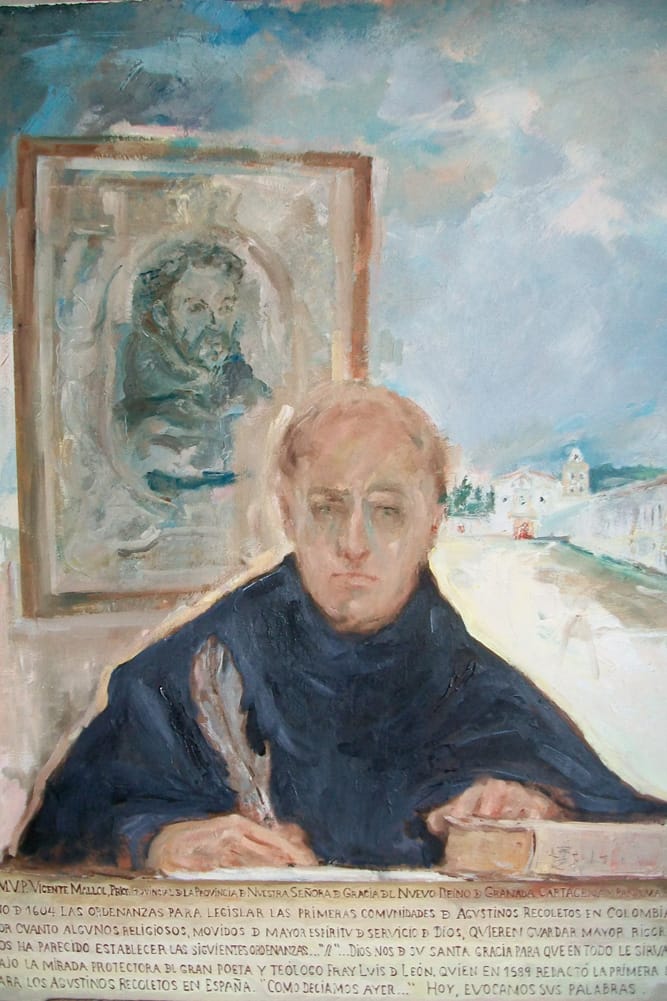The painting portrays Fray Vicente seated at the desk with pen in hand, in the act of writing the “ordinances” or constitutions of El Desierto de la Candelaria, whose convent and church are seen in the background. Mallol paints him, expectedly, in Augustinian habit, as he was the prior provincial of the province of Our Lady of Grace, in Nueva Granada (Colombia), when the first shoot of Recollect reform appeared in America, in 1604.
Behind Fray Vicente the painter had the happy idea of placing the known portrait of the Augustinian poet Fray Luis de León. This may surprise those who are unaware that 16 years before his fellow religious did it in Colombia, Fray Luis had written the so-called Forma de vivir or rulebook with which the first communities of Augustinian Recollects in Spain were governed. In that way, and by establishing eye contact between the two, Juan Mallol underscores the unity between the two legislators and augurs a life project that runs through the centuries up to the present day. All this is perfectly explained in the old-style caption at the foot of the painting.
It is not the first painting that Juan Mallol dedicates to Fray Vicente. In fact, between the Catalan artist and the 17th century Valencia friar there runs a blood relationship that made the former portray his relative in several occasions. Moreover, there is the curious coincidence that both have lived in Colombia.
La Popa
In the same way that he has now donated a painting to the convent of El Desierto, so also in July 2006, Juan Mallol gave another to the convent of La Popa, in Cartagena de Indias. In the latter work, which was inspired from ancient paintings, he portrayed Fray Vicente in another of his facets, as missionary and author of a catechism in the Chibcha language. Also, that work was part of a collection of paintings that formed a tribute to the Recollect convent of La Popa: three were dedicated to each of the three Augustinian Recollect martyrs of Urabá (1632) and two others portrayed panoramas centered on the hill of La Popa, which serves Mallol’s Inspiración as a veritable magnetic pole.


